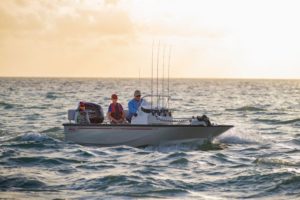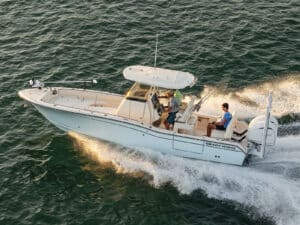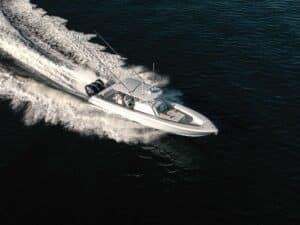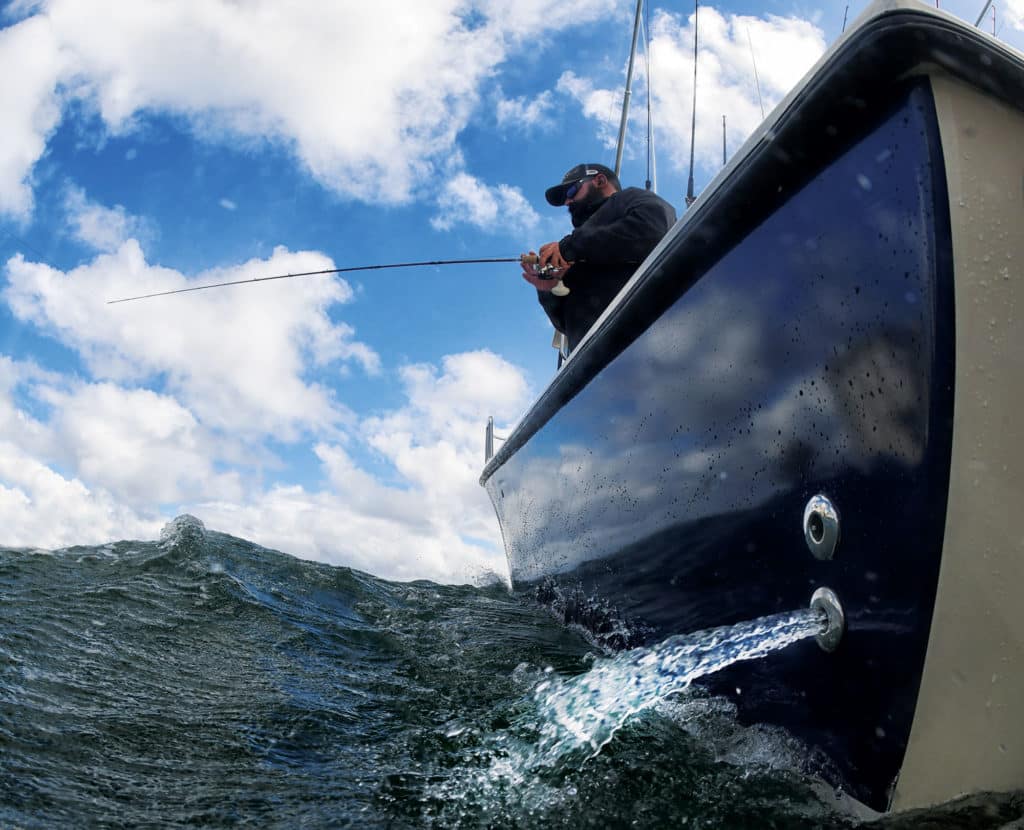
“Hope ain’t a tactic.” The gritty mantra uttered by Mark Wahlberg’s character in the film Deepwater Horizon sums up the principle behind bilge-pump systems. Failure to maintain a way to effectively evacuate bilge water implies that you’re relying on hope that a through-hull fitting won’t fail, a livewell hose won’t come loose, or a floating timber won’t hole the boat and sink you.
I’ve been to the edge more than once, most recently on a run in heavy seas from Key West, Florida, to the Dry Tortugas. About 30 miles out, the captain noticed that the boat — a newly built 39-footer — had grown sluggish.
The crew opened the bilge hatch and were met with a gusher of seawater. We discovered later that one of the hose clamps for the livewell pump had come loose. Meanwhile, water poured in. The bilge pump, its strainers clogged with fiberglass shards from the construction process, could not keep up.
We had one last option. The captain carried a portable high-capacity bilge pump rigged with a long hose and a plug to connect with the ship’s 12-volt DC power. Within minutes, this “crash pump” had drained the bilge. With the water gone, the crew could find and fix the leak and clear the strainers. It’s this kind of experience that inspires deep appreciation for bilge pumps.
Pumping Capacity
There’s no federal requirement for bilge pumps on recreational boats, though a dewatering device is among items recommended when Coast Guard-certified examiners conduct a vessel safety check.
However, virtually every new powerboat comes with a bilge-pump system. How much bilge-pump capacity does a boat require? Most boatbuilders use guidelines from the American Boat and Yacht Council to determine the number of pumps and the gallons-per-hour capacity based on bilge configuration and volume.
Yet, what about older boats? How do you determine the bilge-pump capacity when refitting? If in doubt, use the same number of pumps and same capacities (if not more) as when the boat was new. If the old system is gone and there’s no clear-cut answer, the late David Pascoe, boat surveyor and author of a number of boating books published in the early 2000s, offered the following formulas based on boat length.
- 16 to 20 feet: 2,500 gph
- 21 to 26 feet: 3,000 to 3,500 gph
- 27 to 35 feet: 3,500 to 4,500 gph
- 36 to 42 feet: 6,000 gph
- 43 to 49 feet: 8,500 gph
- 50 to 59 feet: 9,000 to 10,000 gph
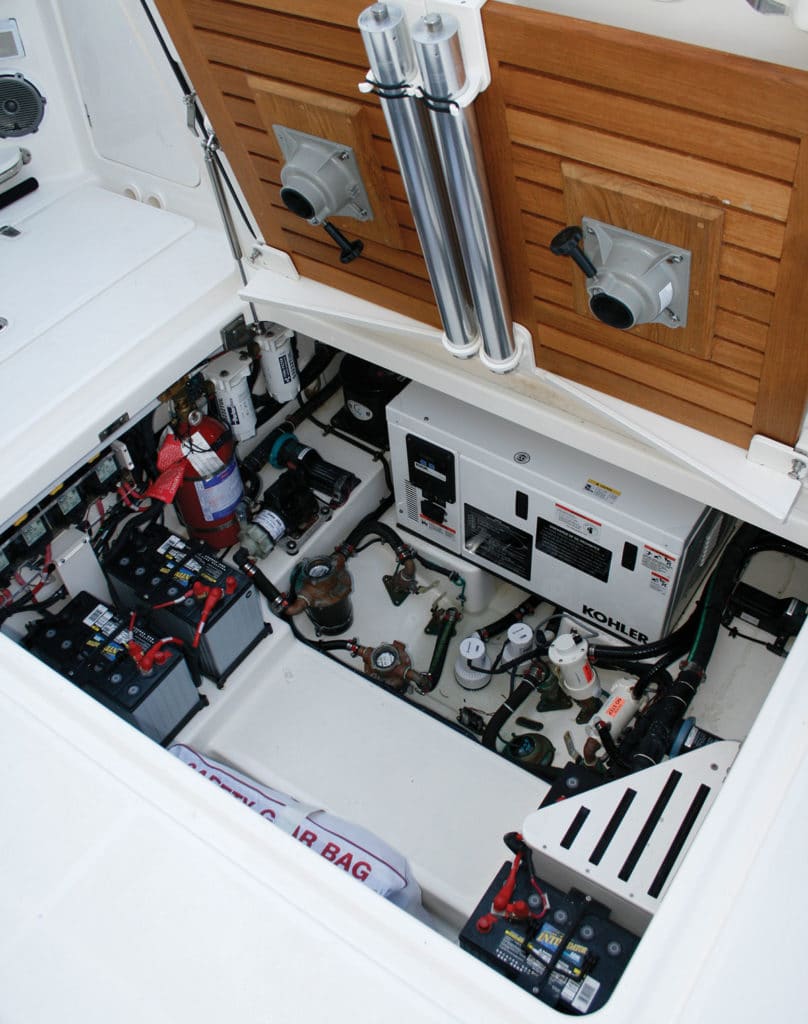
Don’t Skimp
Keep in mind that gph ratings for pumps from brands such as Attwood, Jabsco, Johnson, Rule, and Shurflo are measured at the pump itself and do not account for lift (the distance that the water must be pumped upward to the through-hull fitting above the waterline), drag generated by elements such as corrugations in the hose, or dips in supply voltage. With this in mind, count on about 60 percent of the rated capacity.
Multiple bilge pumps are better than one, because if one pump fails, others will likely remain working. You might want a second pump in a forward bilge compartment separated by a bulkhead, or even a third one in a compartment amidships.
Some skippers also equip the aft bilge area with two pumps, with one mounted 4 to 6 inches higher than the primary pump. In this configuration, the secondary pump does not see as much service as the lower primary pump, and thus tends to last longer, and stands ready to assist when things grow dire. Each pump should have a dedicated through-hull fitting.
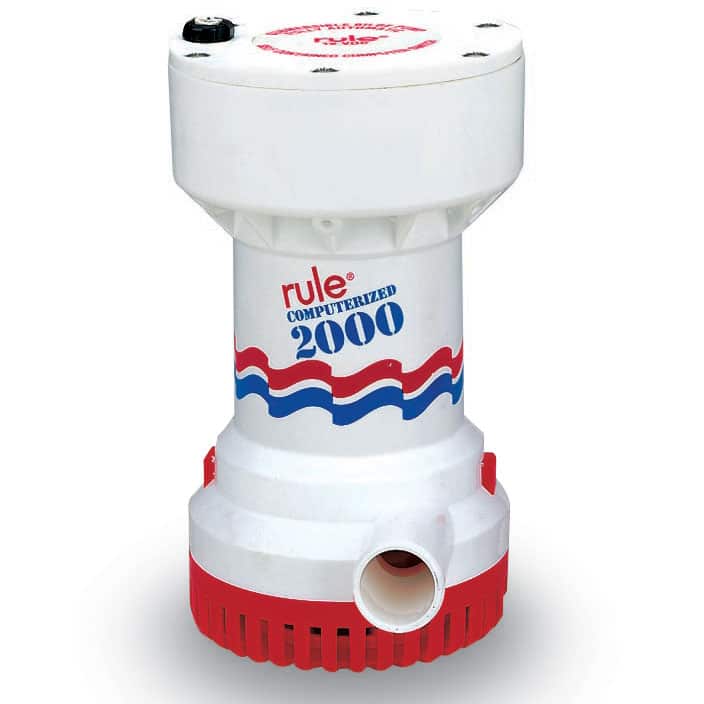
Automatic Systems
Most new saltwater-fishing boats feature automatic bilge-pump systems with sensors to turn on pumps when bilge water rises to a certain level. Some pumps, such as the Rule-Mate 2000 (about $250), have a built-in automatic switch. Other pumps require the addition of a sensor such as the Shurflo float switch (about $32), which is electrically connected to the pump. You can also flip on the pump manually with a switch at the helm, but the pump can activate on its own, assuming it is receiving power, if bilge water gets too high.
I like mechanical automatic switches versus those that use electronic sensors. Most mechanical switches let you perform a physical test, while most electronic systems do not.
Automatic systems are particularly helpful in preventing sinkings when a boat is left unattended at the dock. The system should be wired directly to a battery so the automatic feature will still be active even if you turn off the main battery switch. Automatic bilge-pump systems can also warn you while you’re out fishing; it’s hard to ignore the sound of water streaming out of the through-hull fitting when the automatic pump kicks on.
Maintenance Matters
Check your bilge-pump system before every trip. Make sure the pump runs when you activate the manual switch. Also, reach into the bilge and lift the automatic float switch to ensure that the pump powers up. Rule’s Rule-a-Matic switches feature external levers that make it easy to conduct this test.
Malfunctions can occur for a number of reasons, including corroded or broken wires and connectors, a blown fuse, a worn-out pump, a broken float or even the switch at the helm. Fix the problem before you head out on the water.
Read Next: An Emergency Hand Pump Can Keep Your Boat Afloat
While your head’s in the bilge, check around the switch to make sure there are no obstructions (such as a bucket stowed in the bilge). Take a close look at the strainer and clear debris that might impede water flow to the pump.
Auxiliary Systems
A bilge-pump system can fail at any time, so carry a backup such as the crash pump described earlier or a manual system such as the Beckson 36-inch Thirsty-Mate portable hand pump (about $48). Whale Pumps also offers the Titan manual (about $170), which mounts permanently and will pump 28 gallons per minute.
At the very least, carry a bucket, but check ahead of time that it will allow you to scoop water out of the bilge compartment. The ubiquitous five-gallon bucket might be too big and/or too heavy, once full, to effectively bail water. Follow these guidelines, and avoid relying solely on hope to prevent your boat from sinking.

